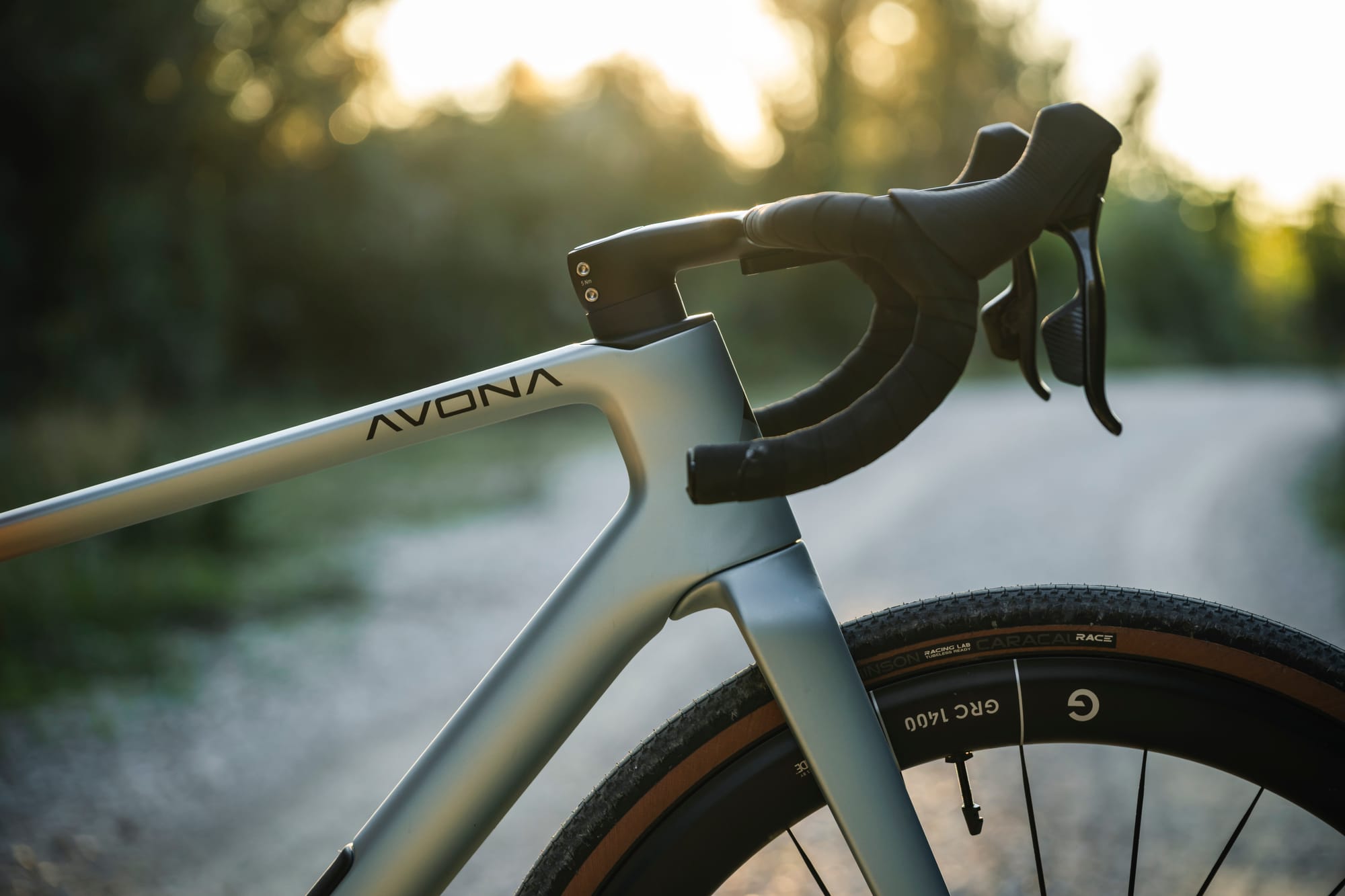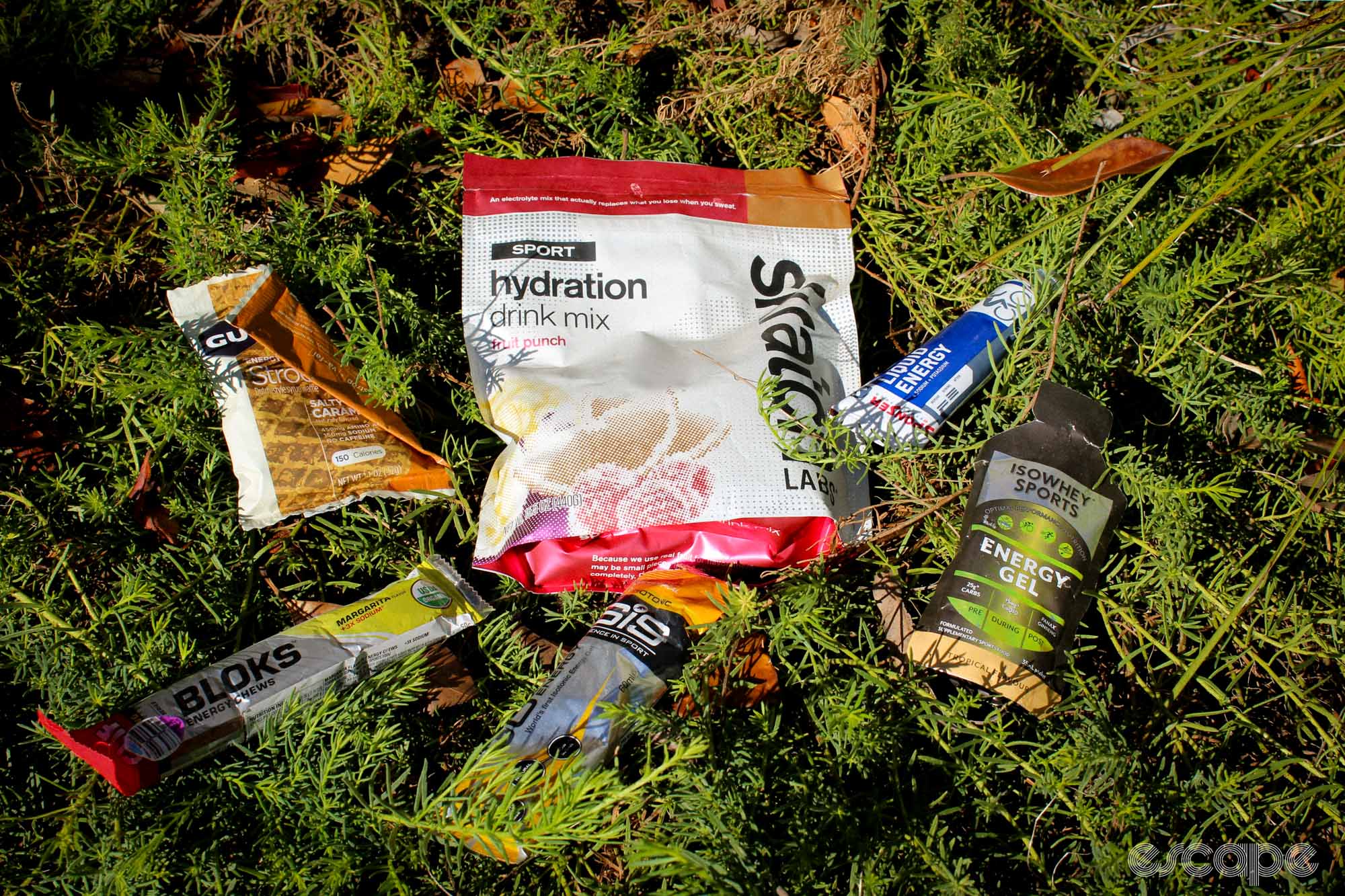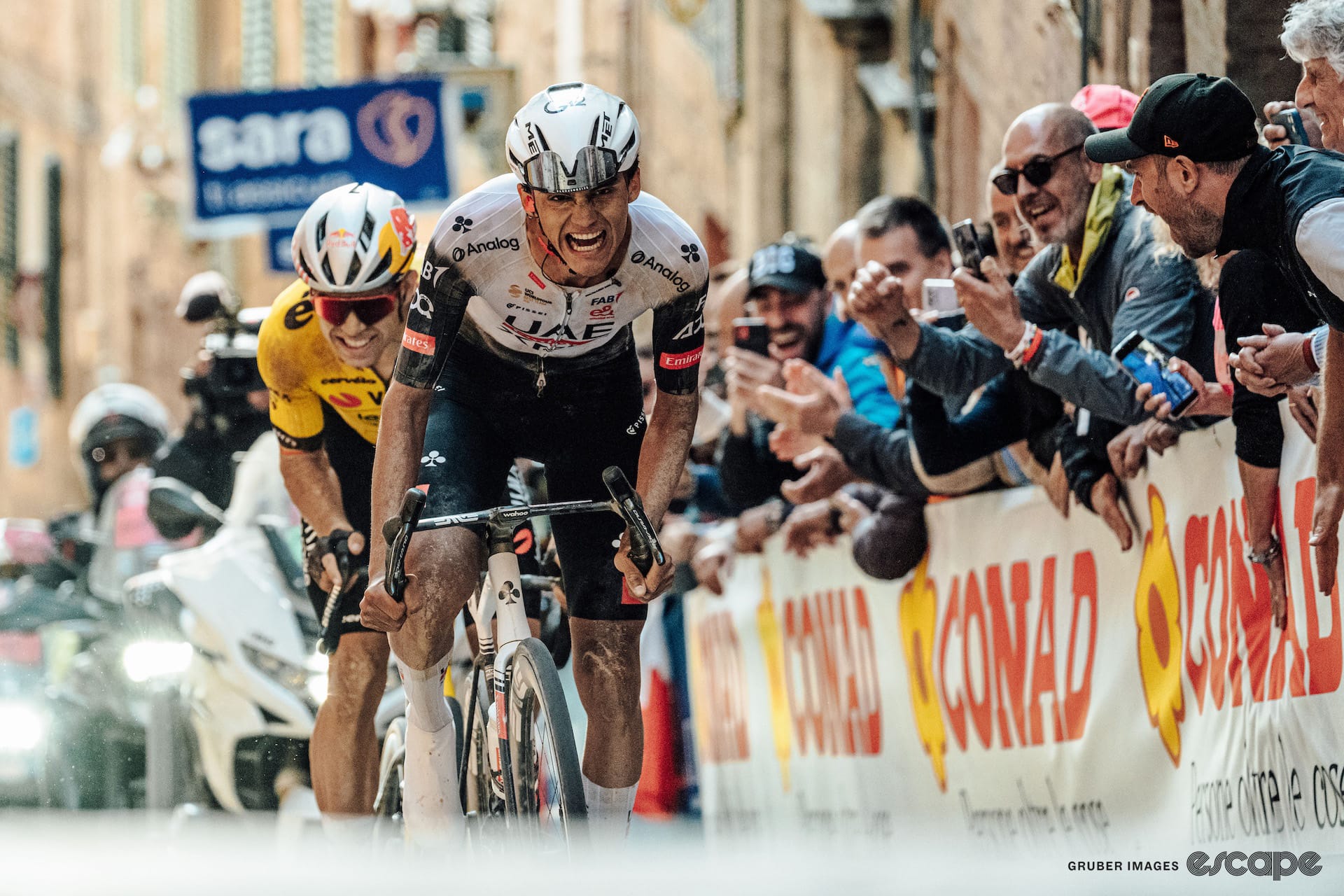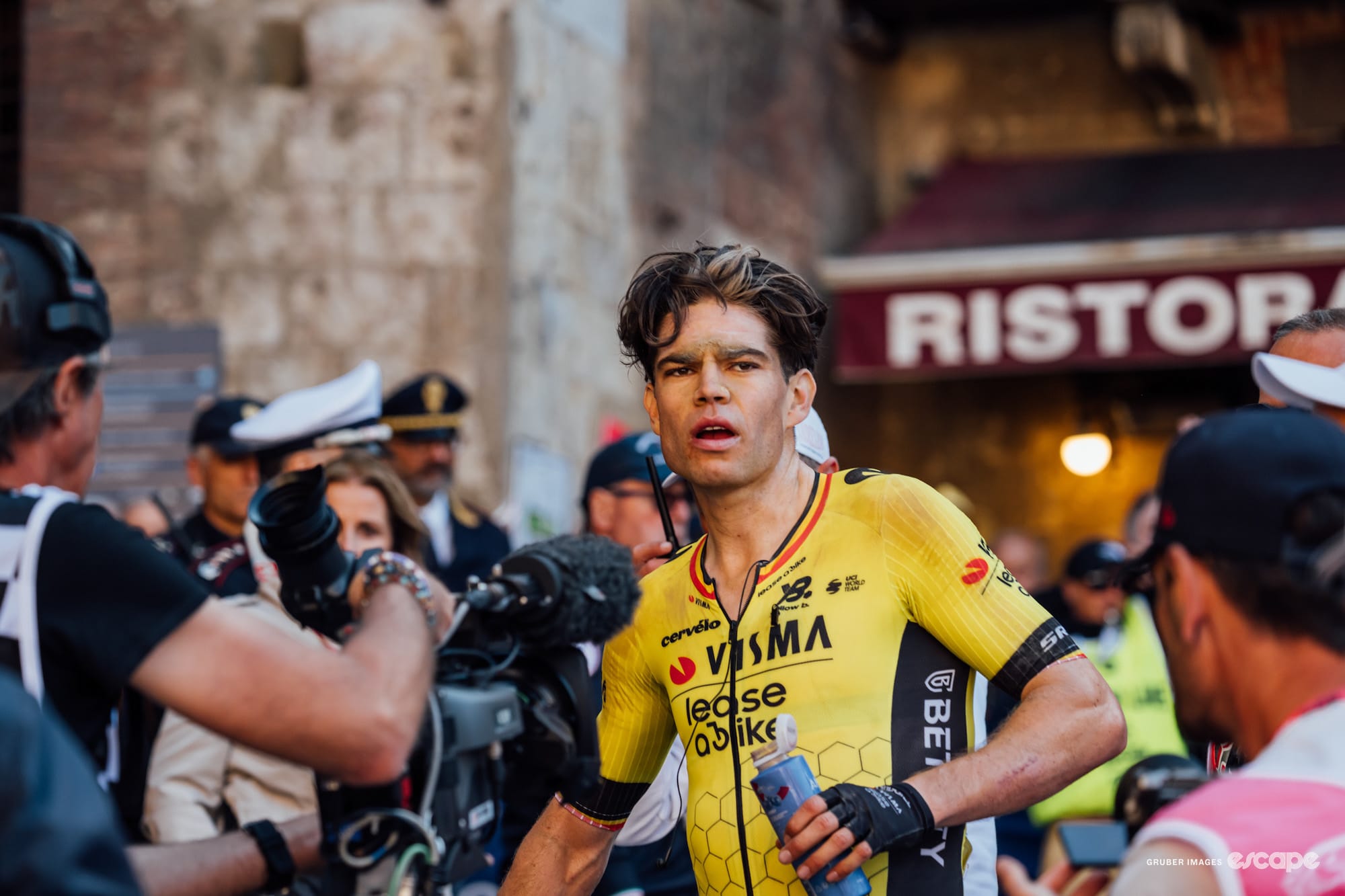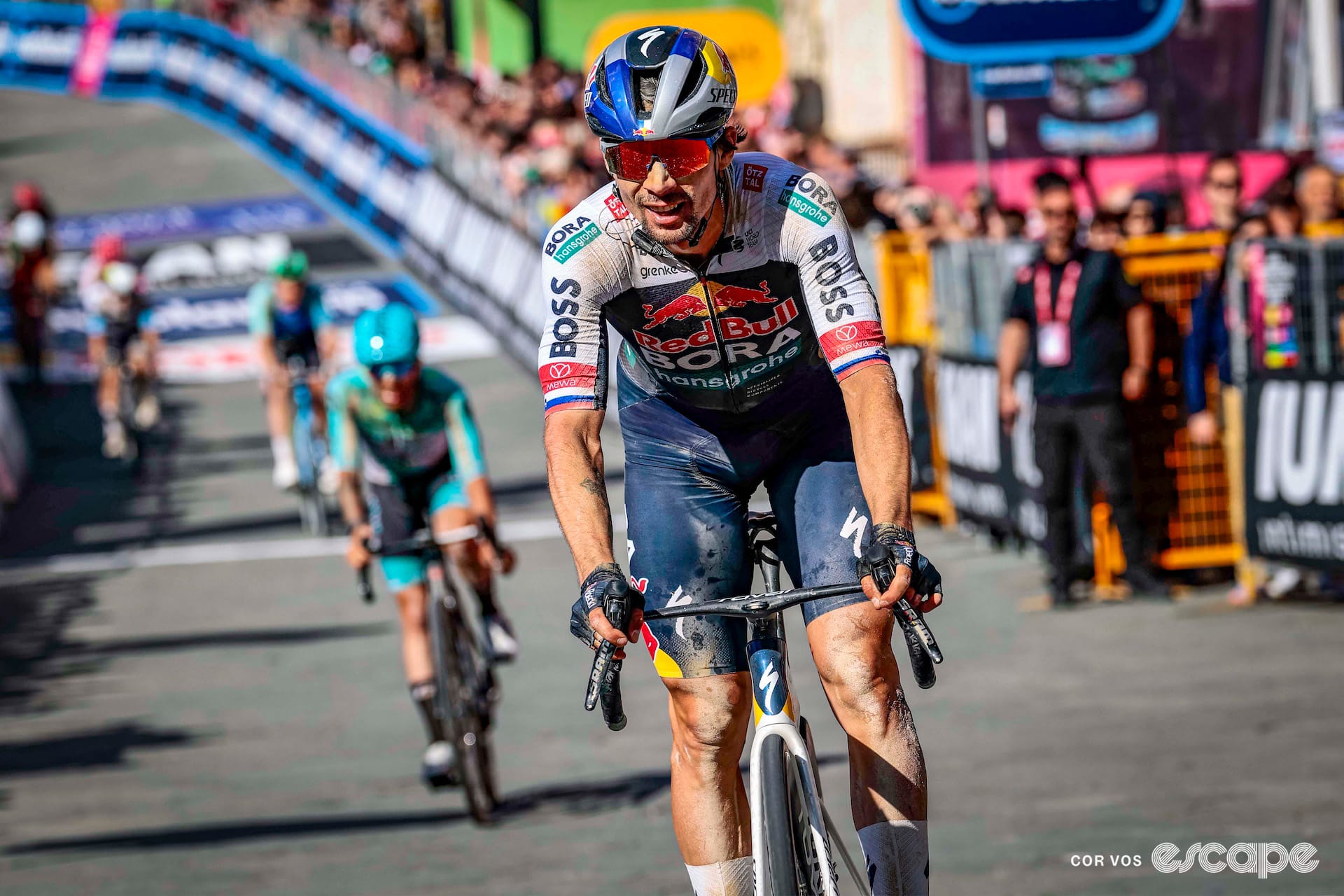At the recent Road Bike Connection event held in Massa Marittima, Italy, a new bike brand shared the floor with the more well-established brands in attendance. Avona is the brainchild of Jonas Müller, who previously founded Arc8, and business partner Max Koch. The new brand's ethos is to consider performance as a whole, rather than just focusing on more narrow pursuits such as how a bike tests in the wind tunnel.
Drawing on nearly two decades of experience across some of the biggest names in cycling, the pair have decided to set up their own brand that leverages that experience to deliver a brand with a different perspective. Avona’s range spans from road bikes to XC mountain bikes, focusing on the performance-oriented segment.
At launch, only the brand's gravel bike will be available, with the mountain bike and road bike to follow in the coming months. Ahead of its launch, I got to sit down with Müller and Koch to talk about Avona and understand what sets the brand apart.
From industry insiders to independent innovators
Both founders have extensive backgrounds in the cycling industry. Müller spent 17 years working for the likes of BMC, Santa Cruz, and DT Swiss before transitioning to frame manufacturing in Taiwan and founding his own engineering business. This business acted as the springboard for the Arc8 brand – a venture that started as a side project but grew faster and larger than anticipated.
However, the Arc8 business model was a complex structure. Three separate parties were involved in ownership, ultimately slowing decision-making and diluting the ability to innovate freely to the extent Müller wanted. Frustrated by the inability to work how they wanted, the duo wanted to start afresh, and Avona was born. “We wanted something under our control, where we can make the products we want to make — and grow at a pace that makes sense,” explained Müller.
As a small business with a simple internal structure run by engineers, this model removes some barriers that thwart larger brands, where projects are passed between departments, slowing things down and changing directions.
Koch began his career in the industry in 2006 as a bicycle mechanic. Before launching Avona, he was managing director of MK Cycles, a company working as a license partner for Arc8, and in this time he worked closely with Müller. That collaboration, combined with a shared desire for creative freedom and agility, led to the formation of Avona.
A broader definition of performance
Müller and Koch explained that Avona positions itself as a performance brand. Rather than focusing on metrics like weight or aerodynamics alone, the brand’s philosophy puts greater emphasis on other areas of performance. Fit, handling, drivetrain efficiency, rolling resistance, and real-world ride dynamics are crucial performance factors. “The industry often reduces performance to numbers, like saving 5 watts at 50 km/h,” said Müller. “But for a rider, that can mean something very different depending on whether that is in your comfort zone or at your limit; we want to broaden how performance is understood and measured.”
This also resulted in testing at more real-world speeds. For many, a bike might be 5 watts faster at 50 km/h, but this isn’t useful data because 50 km/h is an unrealistic speed for riders outside of the pro peloton.
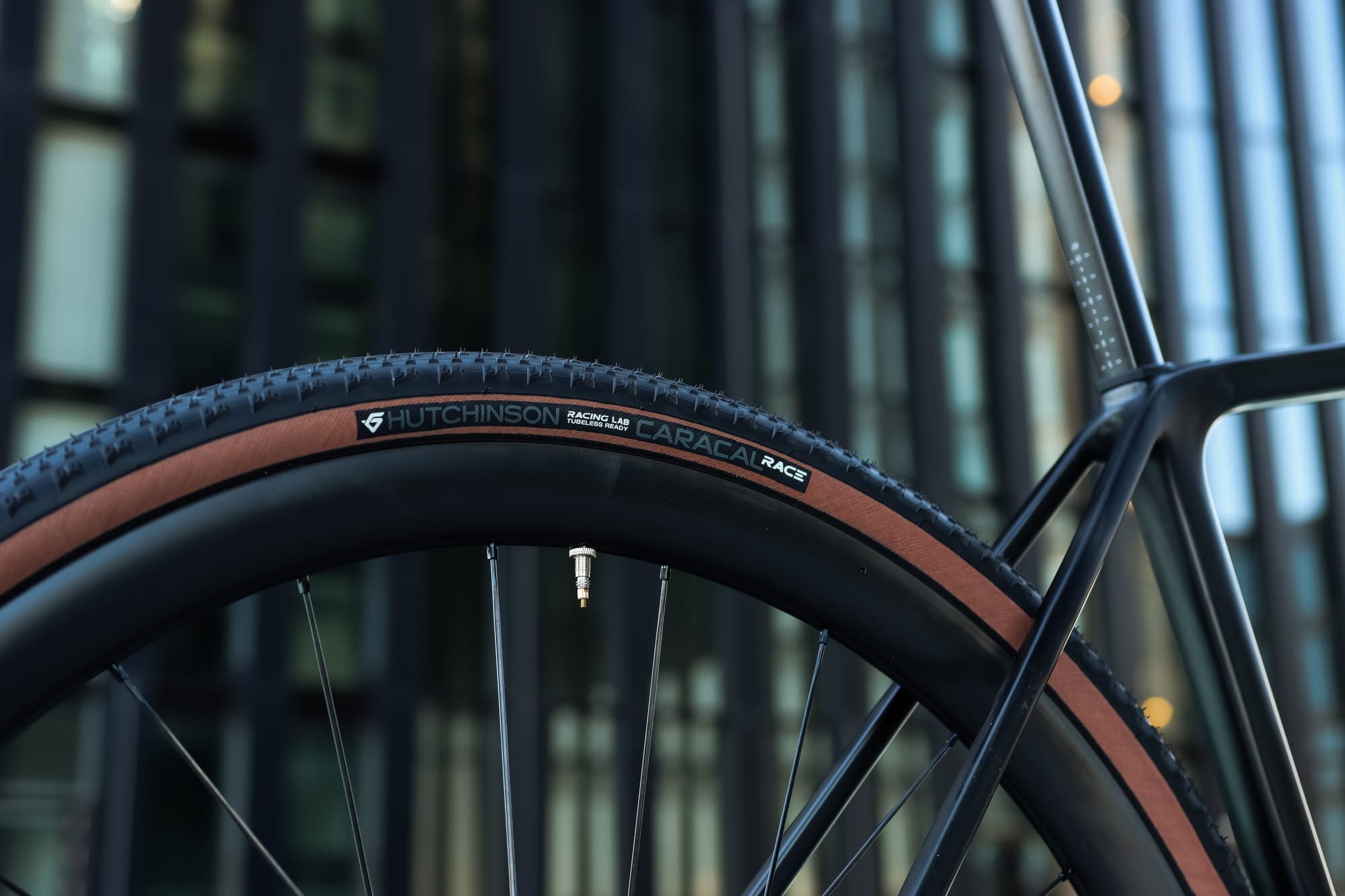
Müller was quick to point out that performance beyond aerodynamics is influenced most by component choice. “There's so much potential in specifications," he said. "The gains we can have in performance are much greater than what we can do on the frame. It's a bit frustrating as an engineer, but once you realise this, it also means you can do something different. For most brands, the performance aspect is only in R&D. When they hand it over to product management, the focus is on price points. If you approach it differently, the gains can be much bigger.”
Although Avona looks to consider broader performance, weight and aerodynamics are not forgotten. “We did quite a big project around aerodynamics at the start, which is not specific to this bike," Müller said. "It was to build broader knowledge. It started with building a library of tube shapes. From that, we knew the aerodynamic and mechanical properties of each profile. This allows us to get the stiffness we need, and we can choose the right balance between weight and aerodynamics.”
To streamline the design process, Müller and Koch used a computational analysis package that allowed for the properties of the carbon layup to be studied in the model. This helped them to understand what areas of the frame were under the most stress on a layer-by-layer basis, a method done by others, but commonly contracted out by all but the of biggest brands. The result was that the frame could be made lighter by using fewer layers of carbon fibre in areas that did not experience higher stress. “We can run dozens of virtual layup iterations, seeing how carbon plies behave and where material can be saved without losing performance,” Müller explained. “It allows us to create more refined products without wasting time or resources.”
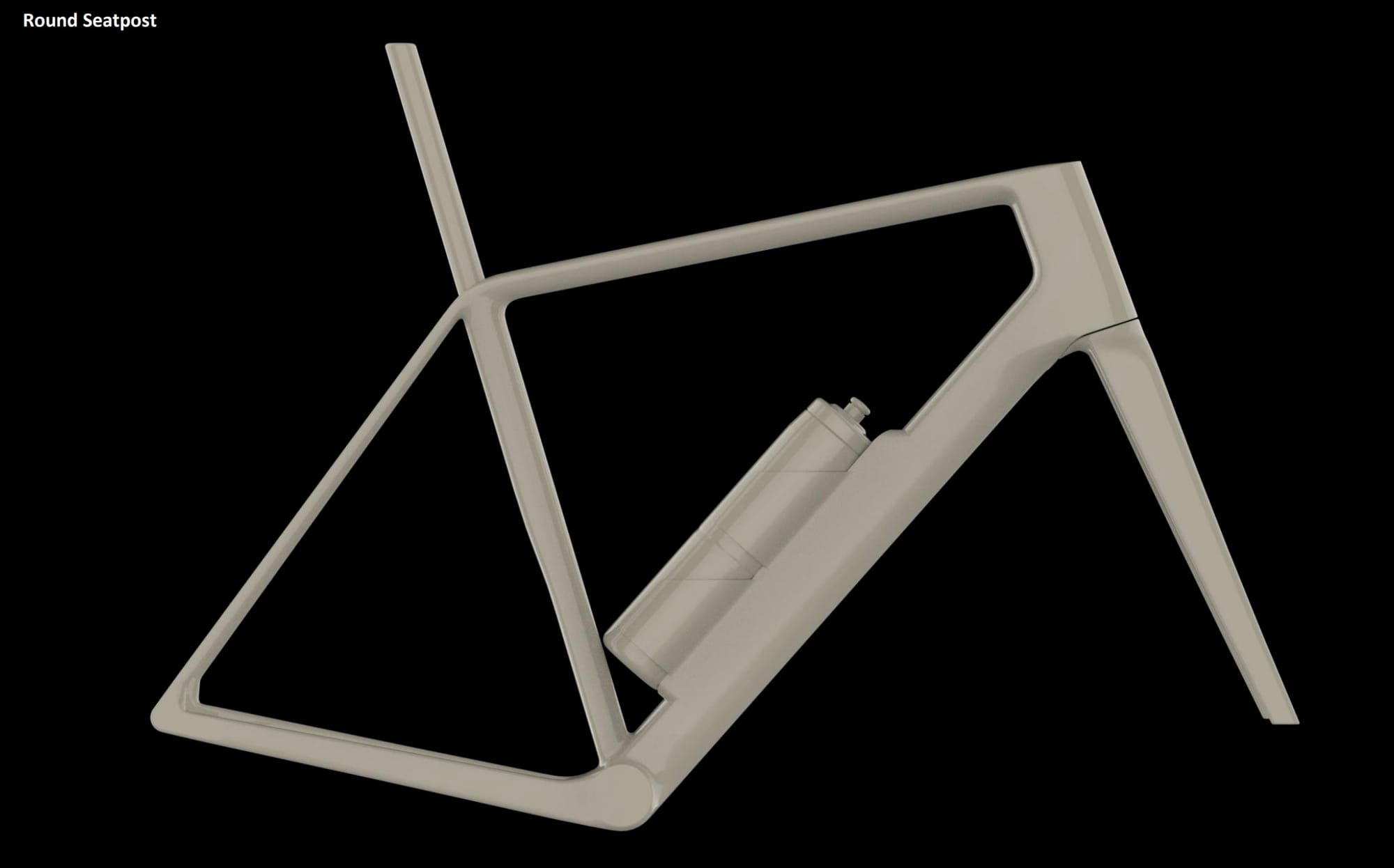
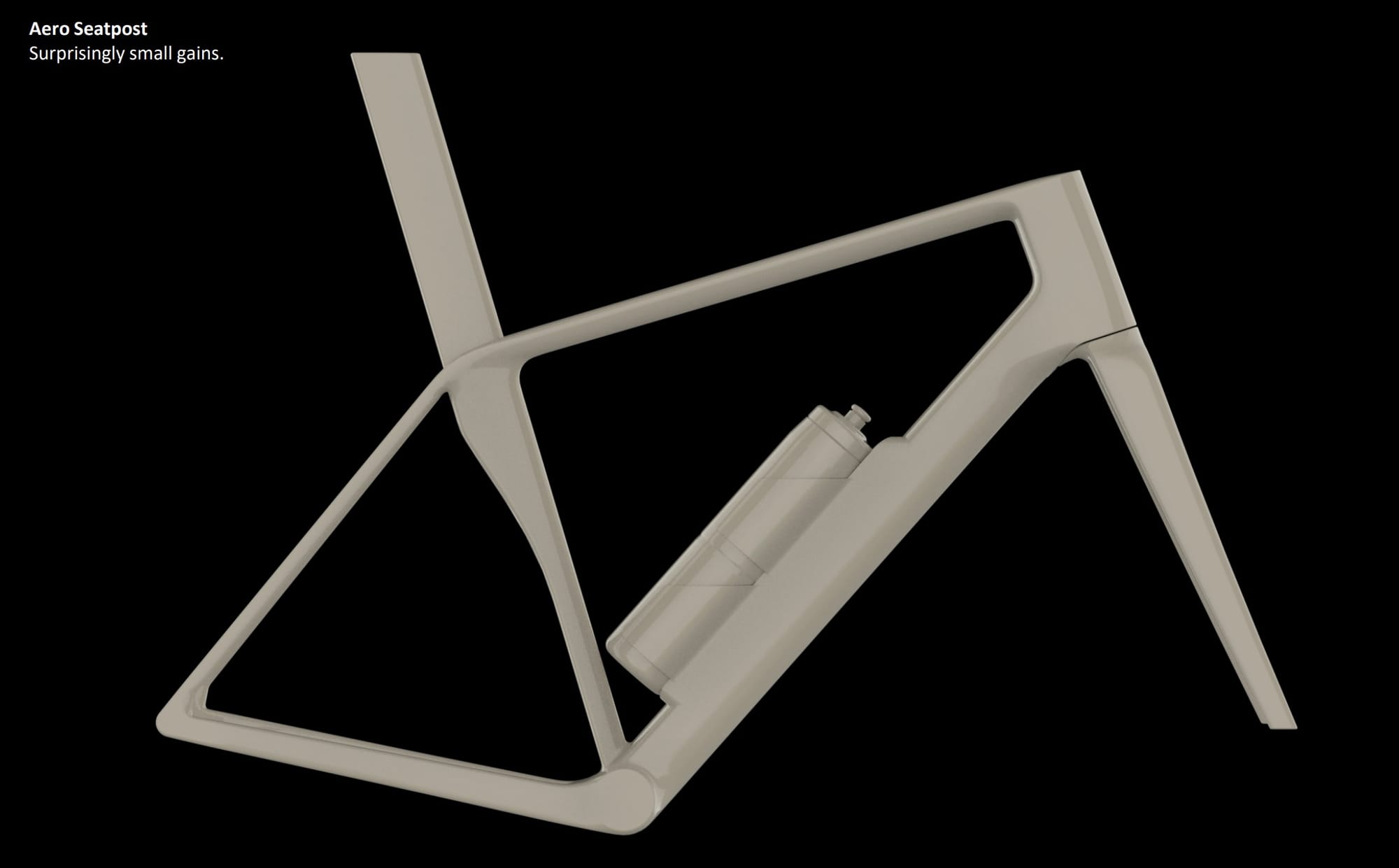
In total, 40 models were run through the simulation, trying various tube shapes and designs, aiming to settle on the sweet spot between aerodynamics, ride quality, and weight. During this phase of the process, the brand found that by having a slightly sloping top tube, the drag of the frame improved by a small margin as it changed the interaction of the airflow with the rear wheel. Likewise, moving to a far deeper seat tube and seatpost yielded only small gains, and even removing the seatpost from the model entirely didn’t create a significant advantage.
The final element of performance that Müller and Koch considered was vertical compliance. The pair believe this is an area of bike design that is forgotten about again after being a prominent factor 10 years ago. “If you are more comfortable, you can generate more power," Müller said. "The second benefit is less understood; old studies show that there's quite a big performance gain if you have vertical compliance on bumpy grounds.”
Combining these factors “You need less power and you can generate more power," Müller continued. "So the total gain is even bigger.”
Waxed chains, premium component choice, and customisation
Avona puts emphasis on component and spec choice in the name of performance. For example, each bike, regardless of price point, ships with a waxed chain courtesy of CeramicSpeed. Avona also provides CeramicSpeed UFO drip lube, and a tag explaining the chain treatment so riders know what they are getting. The brand believes this attention to detail can deliver meaningful performance benefits and longer-term cost savings for riders.
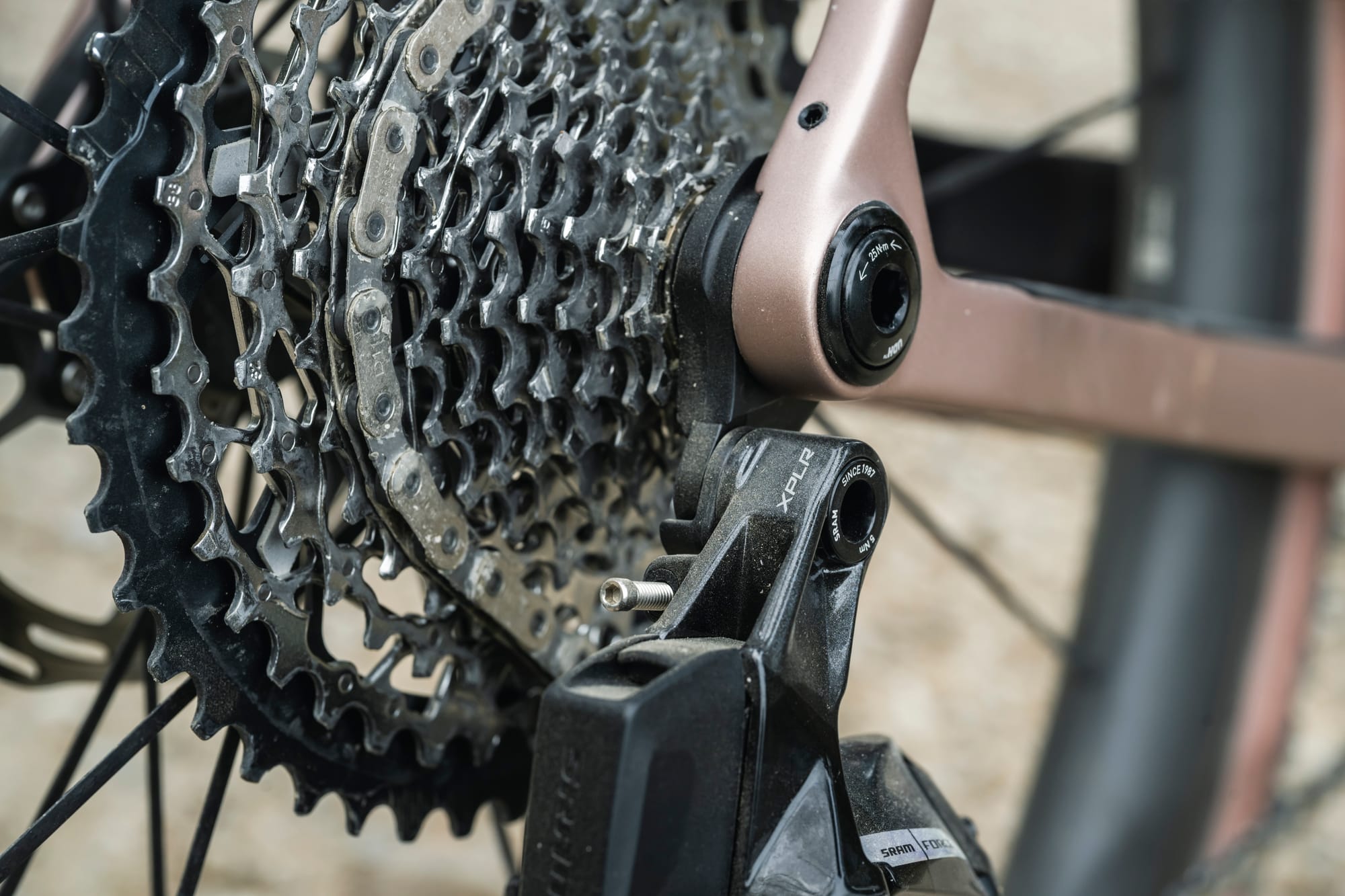
All bikes, regardless of price, also ship with high-performance tyres, rather than shipping lower-tier bikes with cheaper alternatives to hit a specific price point. At slower speeds, the impact of rolling resistance and mechanical efficiency can outweigh moderate aerodynamic improvements. As a result, Avona tested a range of tyres before settling on the Hutchinson Caracal Race for the gravel bike. These offered the best rolling resistance whilst retaining the performance expected from a gravel tyre on loose surfaces. Other tyres can be specified by consumers, but as a base, Avona believe that all bikes should come with high-quality tyres as standard.
Customisation also plays a key role. Consumers can select key fit-related components such as bar width, stem length, crank length, and seatpost offset, as well as performance-related options like tyre choice and gearing setups. The goal is to allow riders to tailor their bikes to their unique needs and terrain, without requiring a full custom build.
The Callis gravel bike
Latin for "gravel road" the Callis is Avona’s take on performance gravel. Available in four sizes, the frame has a claimed weight of 950-1020 grams (depending on size). The fork weighs 463 g with an uncut steerer.
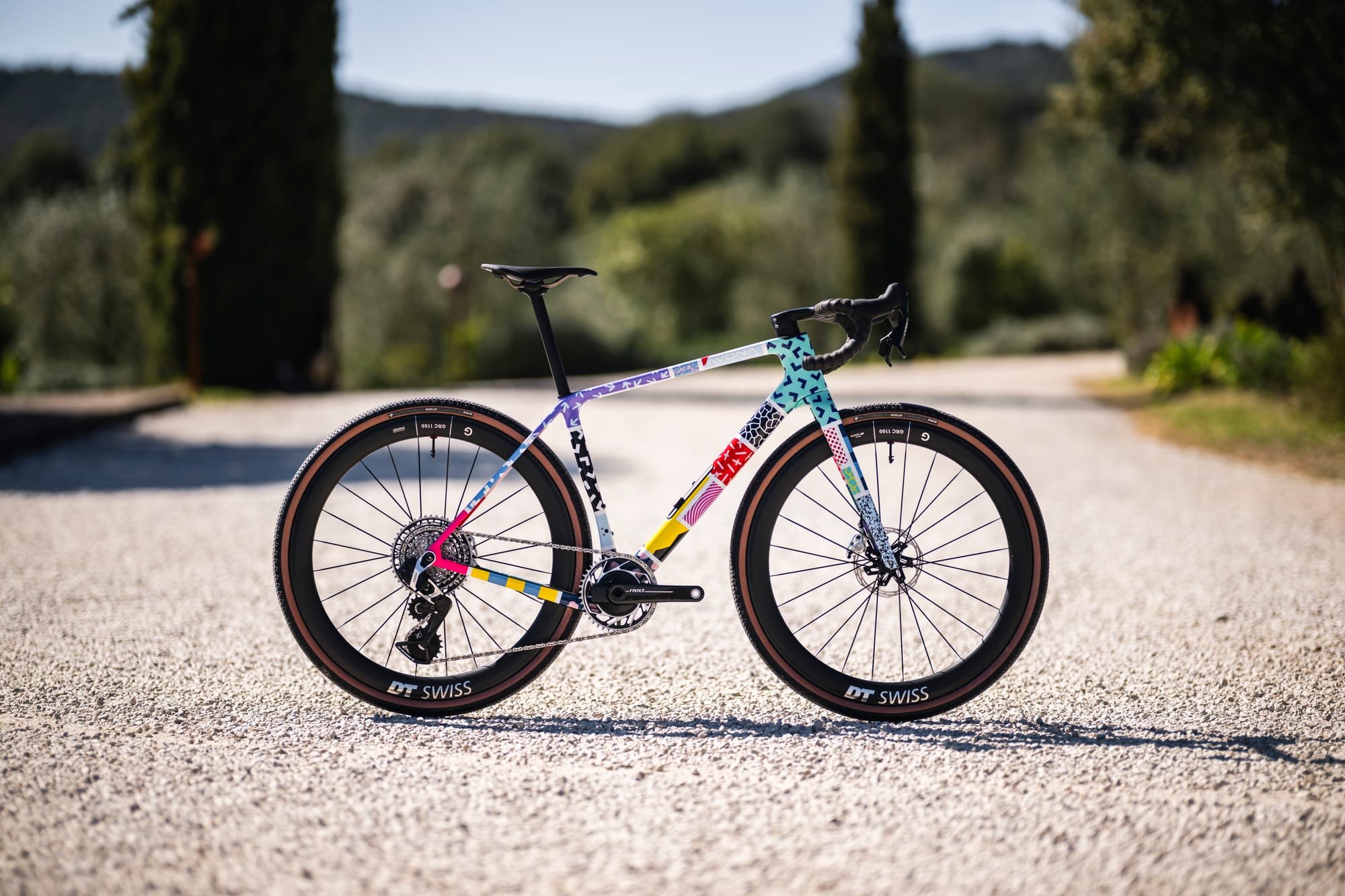
With 50 mm tyre clearance, the Callis should satisfy the current generation of gravel racers, although the scope to squeeze anything wider is limited. Avona has also ensured that the Callis is customisable, allowing both 1x and 2x drivetrains to be fitted. With a single chainring, the frame can accommodate a 46-tooth ring. This drops by a single tooth to 45 for a 2x set-up.
The Callis frameset features a well-sized internal storage door. On the backside of the door are a series of small bungee cords to hold things like a pump, CO2 inflator, or multitool without it rattling around inside the frame. The opening mechanism is easy to operate, and unlike a few other designs on the market, the door can be easily removed with both bottles mounted.
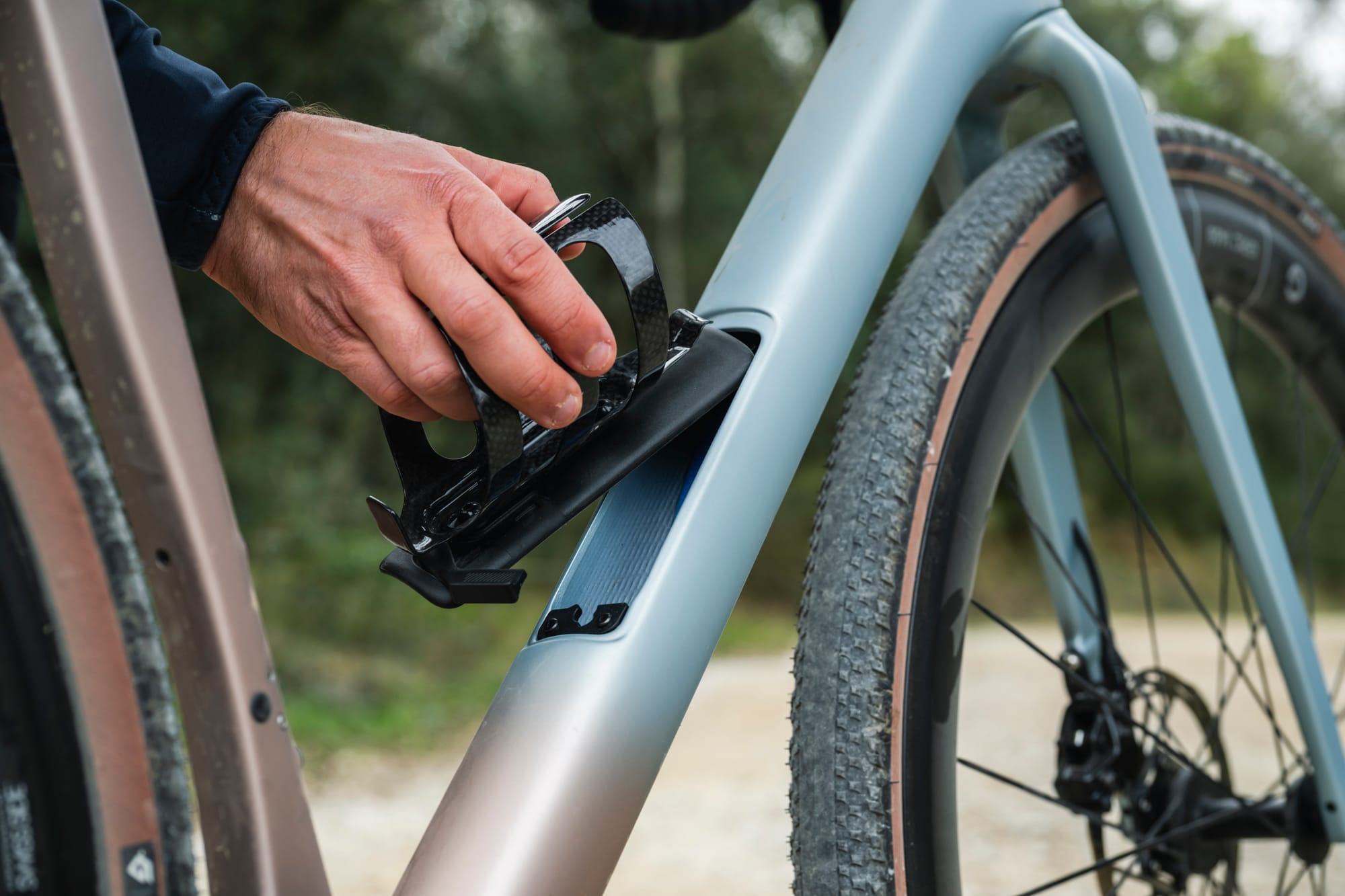
Avona makes some eye-catching efficiency claims about the Callis, but only in relation to the (now-discontinued) Arc8 Eero. Avona says its calculations come from third-party testing facilities, but the purported gains are primarily from equipment choices that are not unique to the Callis. The total figures are essentially individual test results stacked on top of each other, rather than a full-system test. As such, the claims are effectively impossible to assess.
Almost full customisation
Avona is not a fully custom-built bike brand, but it does allow a level of component choice. Riders can spec the build specifically for their personal fit and equipment preference.
As noted above, stem length, bar width, crank length and seatpost offset can all be chosen at the point of sale. For SRAM builds, there is also the option to spec a ‘mullet’ setup using a mountain bike rear derailleur and 10-52 cassette for no extra charge. Beyond this, Avona also allows customers to spec individual upgrades to the bike if they want to upgrade the wheelset or groupset, allowing for price and build to be managed by the end consumer rather than settling for a compromise from the generic build kits.
The Callis is also available in four colourways:
- Clear coat/raw carbon
- Ready-to-paint (RTP)
- Rosé/Blue
- #savethepostalservice limited edition design
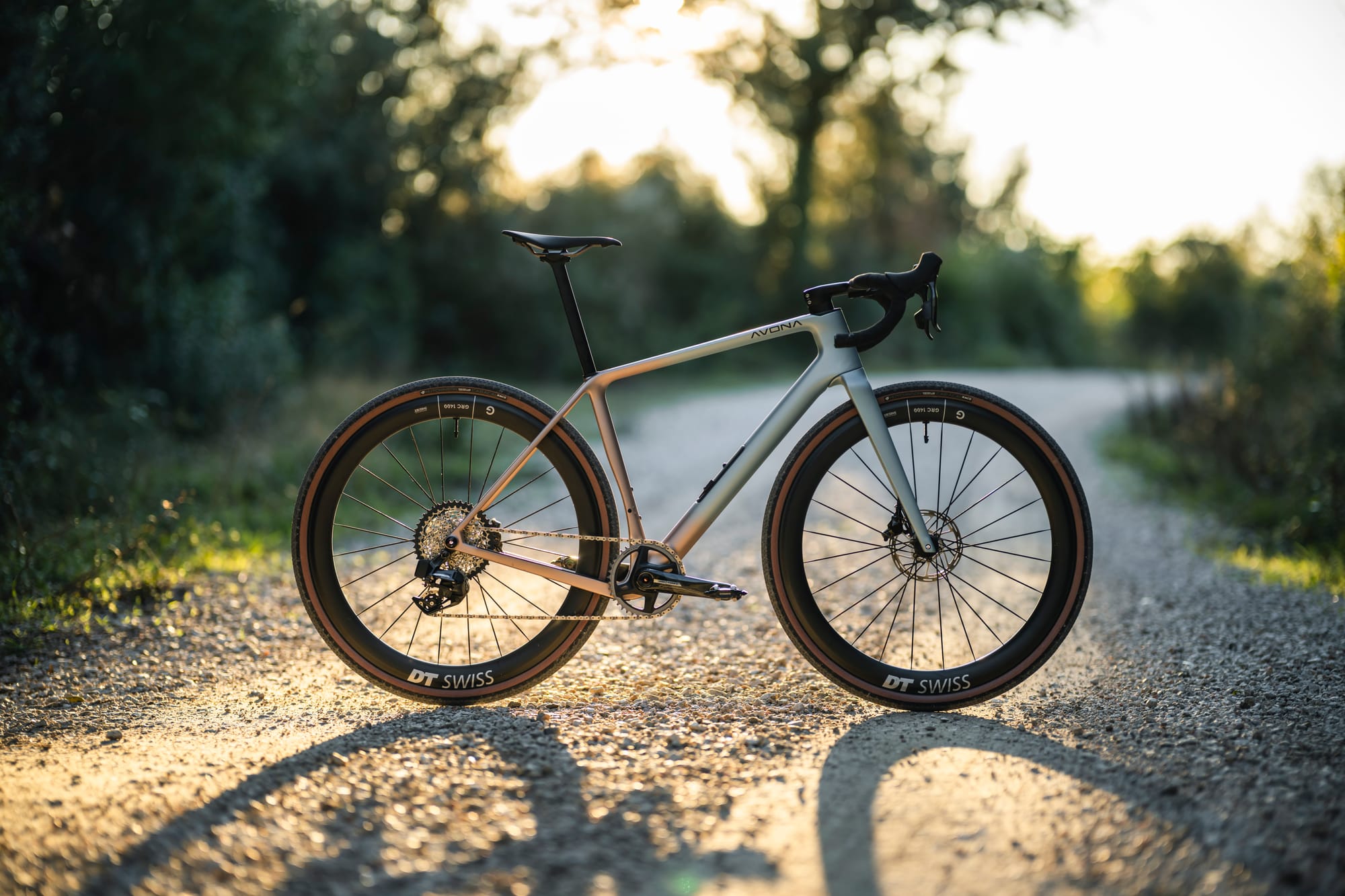
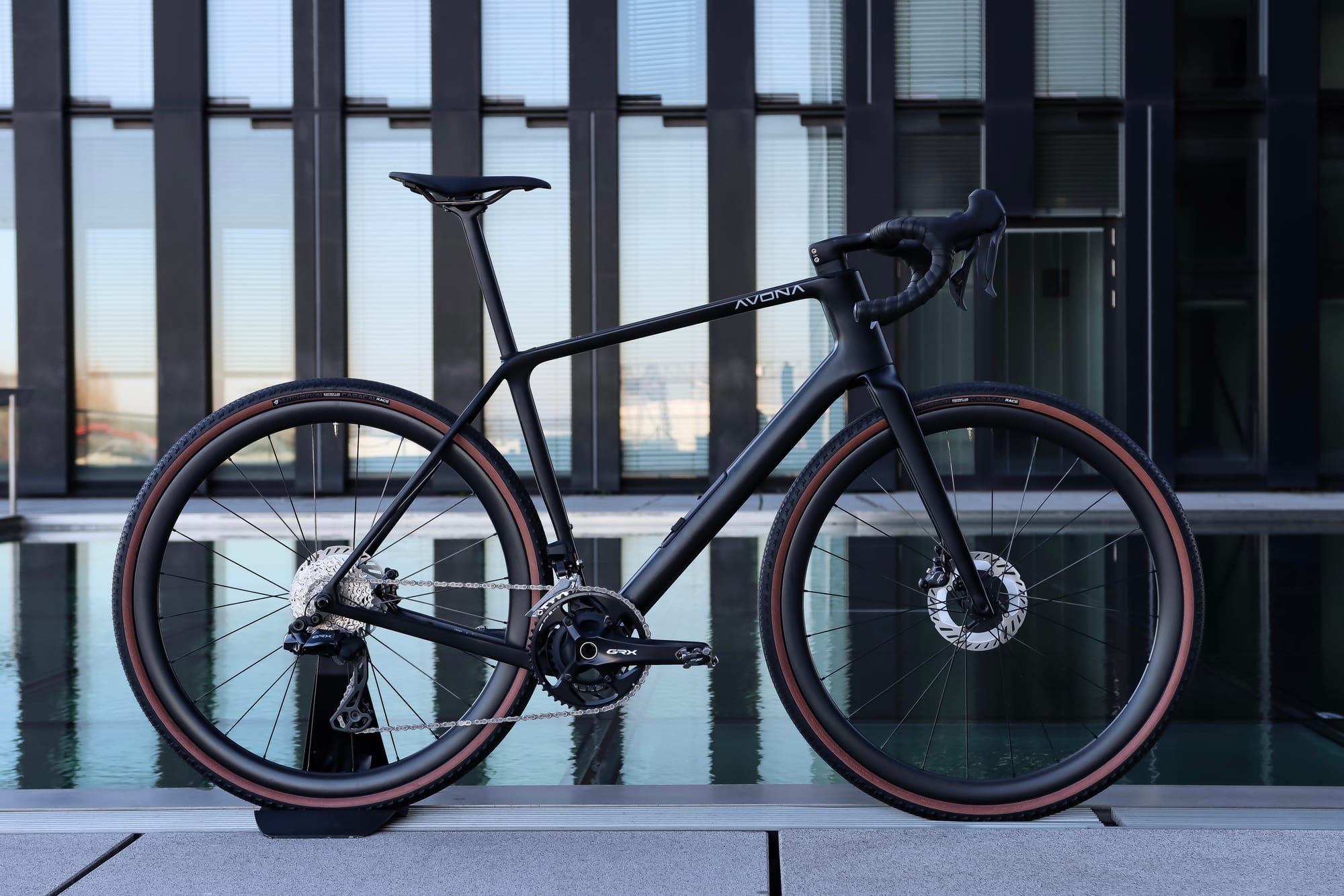
Build kits and pricing
The Callis is available in five stock builds along with a frameset retailing for €3,500. Complete builds start at €4,600 for a SRAM Rival/DT Swiss G1800 build, topping out at €10,000 for a SRAM Red/Powermeter/DT Swiss GRC1100 50 mm. US and Australian pricing will follow once distribution has been finalised.
The finishing kit is provided by Faserwerk, a brand owned by Müller and Koch that operates independently of Avona.
All assemblies will take place in Germany, on a build-to-order basis. This allows Avona to adapt quickly to customer preferences and market trends, ensuring each bike meets individual needs. “We’re not trying to be the biggest,” Koch said. “We just want to make bikes that are uncompromising, that perform in the real world, and that riders will be passionate about.” Giving consumers the flexibility to spec the finishing kit is something that some brands already offer. Orbea’s MyO programme is similar; however, giving full control over bar width, stem length and crank length across all models isn’t as customisable on this programme compared to Avona’s offering.
The bikes will be available directly through Avona’s webshop but there are still some details to be ironed out regarding global distribution. Australia and Asia are two markets for the brand to finalise details with distributors for, however, the US is a market that is proving more problematic for the time being, with insurance policies cited as one delay.
First ride impressions
The mixed terrain around Massa Marittima provided the perfect testing ground for a performance gravel bike. Long sections of tarmac provided insight into the bike's efficiency, along with fast swooping gravel descents and punchy technical climbs.
At 172 cm, I typically opt for frames with a reach of around 380 mm and a stack of 530 mm. Avona offers the Callis in just four sizes, and my preferred reach fell between sizes M and L, whilst the stack on the S was closest to my typical stack figures. Finding the right size was a challenge.
Did we do a good job with this story?

